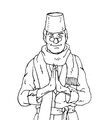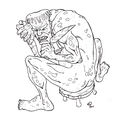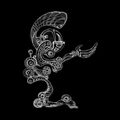Template:Selected anniversaries/April 22: Difference between revisions
No edit summary |
No edit summary |
||
| Line 8: | Line 8: | ||
||1724: Immanuel Kant born ... anthropologist, philosopher, and academic. Pic. | ||1724: Immanuel Kant born ... anthropologist, philosopher, and academic. Pic. | ||
||1758: Antoine de Jussieu dies ... botanist and physician. Pic search | ||1758: Antoine de Jussieu dies ... botanist and physician. Pic search. | ||
||1778: James Hargreaves dies ... inventor spinning jenny. No DOB. Pic search spinning jenny: https://www.google.com/search?q=james+hargreaves | ||1778: James Hargreaves dies ... inventor spinning jenny. No DOB. Pic search spinning jenny: https://www.google.com/search?q=james+hargreaves | ||
| Line 37: | Line 37: | ||
||1895: Étienne Léopold Trouvelot dies ... artist, astronomer and amateur entomologist. He is noted for the import and release of the gypsy moth into North America. Pic. Drawings: http://www.huntington.org/WebAssets/Templates/exhibitiondetail.aspx?id=25040 http://www.graphicine.com/etienne-trouvelot-astronomical-drawings/ | ||1895: Étienne Léopold Trouvelot dies ... artist, astronomer and amateur entomologist. He is noted for the import and release of the gypsy moth into North America. Pic. Drawings: http://www.huntington.org/WebAssets/Templates/exhibitiondetail.aspx?id=25040 http://www.graphicine.com/etienne-trouvelot-astronomical-drawings/ | ||
||1902: Henri Lafont (real name Henri Chamberlin) born ... head of the French Gestapo during the German occupation in World War II. He was executed by firing squad on Boxing Day, 1944. Pic. | |||
||1903: John Francis Riordan born ... mathematician and the author of major early works in combinatorics, particularly Introduction to Combinatorial Analysis and Combinatorial Identities. Pic, book cover: https://www.amazon.com/Introduction-Combinatorial-Analysis-Dover-Mathematics/dp/0486425363 | ||1903: John Francis Riordan born ... mathematician and the author of major early works in combinatorics, particularly Introduction to Combinatorial Analysis and Combinatorial Identities. Pic, book cover: https://www.amazon.com/Introduction-Combinatorial-Analysis-Dover-Mathematics/dp/0486425363 | ||
| Line 52: | Line 54: | ||
||1916: Hanfried Lenz born ... mathematician and academic ... known for his work in geometry and combinatorics. Pic. | ||1916: Hanfried Lenz born ... mathematician and academic ... known for his work in geometry and combinatorics. Pic. | ||
||1919: Donald J. Cram born ... chemist and academic, Nobel Prize laureate. Pic search | ||1919: Donald J. Cram born ... chemist and academic, Nobel Prize laureate. Pic search. | ||
||1922: Wolf V. Vishniac born ... microbiologist and academic. Mars. Pic search | ||1922: Wolf V. Vishniac born ... microbiologist and academic. Mars. Pic search. | ||
||1924: William Wesley Peterson born ... mathematician and computer scientist. He was best known for designing the cyclic redundancy check (CRC). Pic. | ||1924: William Wesley Peterson born ... mathematician and computer scientist. He was best known for designing the cyclic redundancy check (CRC). Pic. | ||
| Line 96: | Line 98: | ||
||1980: Fritz Strassmann dies ... chemist who, with Otto Hahn, identified barium in the residue after bombarding uranium with neutrons, results which, when confirmed, demonstrated the previously unknown phenomenon of nuclear fission.. Pic: https://www.atomicheritage.org/profile/fritz-strassmann | ||1980: Fritz Strassmann dies ... chemist who, with Otto Hahn, identified barium in the residue after bombarding uranium with neutrons, results which, when confirmed, demonstrated the previously unknown phenomenon of nuclear fission.. Pic: https://www.atomicheritage.org/profile/fritz-strassmann | ||
||1985: Paul Hugh Emmett dies ... chemist and academic. Manhattan Project. Pic search | ||1985: Paul Hugh Emmett dies ... chemist and academic. Manhattan Project. Pic search. | ||
||1989: Emilio G. Segrè dies ... physicist and academic, Nobel Prize laureate. Pic. | ||1989: Emilio G. Segrè dies ... physicist and academic, Nobel Prize laureate. Pic. | ||
| Line 102: | Line 104: | ||
||1993: NCSA Mosaic 1.0 released, the first web browser to achieve popularity among the general public. It was developed by a team of students at the University of Illinois' National Center for Supercomputing Applications (NCSA), and had the ability to display text and images inline, meaning you could put pictures and text on the same page together, in the same window. | ||1993: NCSA Mosaic 1.0 released, the first web browser to achieve popularity among the general public. It was developed by a team of students at the University of Illinois' National Center for Supercomputing Applications (NCSA), and had the ability to display text and images inline, meaning you could put pictures and text on the same page together, in the same window. | ||
||1996: Nobuo Yoneda dies ... mathematician and computer scientist. The Yoneda lemma in category theory and the Yoneda product in homological algebra are named after him. Pic search | ||1996: Nobuo Yoneda dies ... mathematician and computer scientist. The Yoneda lemma in category theory and the Yoneda product in homological algebra are named after him. Pic search. | ||
||1999: Munir Ahmad Khan dies ... nuclear physicist and engineer. Pic. | ||1999: Munir Ahmad Khan dies ... nuclear physicist and engineer. Pic. | ||
| Line 108: | Line 110: | ||
||2002: Victor Frederick "Viki" Weisskopf dies ... theoretical physicist. During World War II he was Group Leader of the Theoretical Division of the Manhattan Project at Los Alamos, and later campaigned against the proliferation of nuclear weapons. Pic. | ||2002: Victor Frederick "Viki" Weisskopf dies ... theoretical physicist. During World War II he was Group Leader of the Theoretical Division of the Manhattan Project at Los Alamos, and later campaigned against the proliferation of nuclear weapons. Pic. | ||
||2003: James H. Critchfield dies ... American CIA officer. Pic search | ||2003: James H. Critchfield dies ... American CIA officer. Pic search. | ||
||2005: Philip Morrison dies ... professor of physics at the Massachusetts Institute of Technology (MIT). He is known for his work on the Manhattan Project during World War II, and for his later work in quantum physics, nuclear physics and high energy astrophysics. Pic. | ||2005: Philip Morrison dies ... professor of physics at the Massachusetts Institute of Technology (MIT). He is known for his work on the Manhattan Project during World War II, and for his later work in quantum physics, nuclear physics and high energy astrophysics. Pic. | ||
Revision as of 13:38, 22 April 2020
1592: Minister, scholar, astronomer, mathematician, cartographer, and inventor Wilhelm Schickard born. He will design and build calculating machines, and invent techniques for producing improved maps.
1779: Steganographic analysis of The Sleep of Reason Produces Monsters unexpectedly releases the Forbidden Ratio, which immediately begins to recruit a criminal gang made up of degenerate cases.
1833: Engineer and explorer Richard Trevithick dies. He was an early pioneer of steam-powered road and rail transport, developing the first high-pressure steam engine, and building the first full-scale working railway steam locomotive.
1880: Actor, cryptographer, and alleged time-traveller Niles Cartouchian uses time crystals to track down and decompute the Forbidden Ratio.
1904: American physicist and academic J. Robert Oppenheimer born. His achievements in physics will include the Born–Oppenheimer approximation for molecular wavefunctions, and the first prediction of quantum tunneling. Oppenheimer will be called the "father of the atomic bomb" for his role in the Manhattan Project.
1956: Cryptographer, intelligence officer, and APTO security consultant Edward Travis uses .
1953: Singer-physicist J. R. Oppenheimer performs his hit song "Destroyer of Worlds" at the Grand Ole Opry, leading to his being summoned before the House Un-American Activities Committee.
1954: Red Scare: Witnesses begin testifying and live television coverage of the Army–McCarthy hearings begins.
1954: Writer and alleged troll Culvert Origenes testifies before the Senate Permanent Subcommittee on Investigations during the Army–McCarthy hearings. Origenes adamantly refuses to name other "alleged trolls", insisting that "there is nothing 'alleged' about trolls," and denouncing the investigation as "a witch-hunt, and not in a good way."
1970: The first Earth Day is celebrated.
1978: Optical fiber is first used to carry live telephone traffic.
1978: Mathematician, art critic, and alleged time-traveller The Eel escapes from the Nacreum, a high-security transdimensional prison, by transmitting himself over the new optical fiber telephone network.
2006: Computer scientist and academic Henriette Avram dies. She developed the MARC (Machine Readable Cataloging) format, the international data standard for bibliographic and holdings information in libraries.
2015: New study of the Toledo giant red ball incident blames the color red: "Of all the colors of the visible spectrum, red is the most likely to spontaneously generate artificial intelligence, which can quickly manifest itself as breaking away and rolling down the street."
2016: Physicist and academic Denys Wilkinson dies. Wilkinson's work in nuclear physics included investigation of the properties of nuclei with low numbers of nucleons. He was amongst the first to experimentally test rules relating to isospin. He also applied concepts from physics to the study of bird navigation. He invented the Wilkinson Analog-to-Digital Converter in the course of his experimental work.
2018: Signed first edition of Lend a Hand stolen from the Louvre by the Forbidden Ratio in a daring daytime robbery. Lend a Hand, which depicts an organic golem, had been in the Louvre for less than twenty-four hours.















